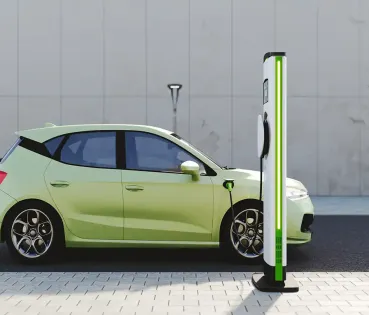
How can we travel more sustainably? Here's how much each mode of transport consumes
Sustainable travel is no longer a fad. It is now a responsibility that increasing numbers of people are taking on. With a few simple tips, you too can join the trend.
This summer we will witness the full recovery of the travel industry. According to a study by Jetcost.es, 78% of Spaniards intend to travel during their holiday weeks. Excellent figures like these are being seen around the world.
Tourism is returning to its former state prior to the pandemic and, moreover, a large percentage of travellers are going to prioritise less crowded destinations and ecotourism experiences. A Travelzoo report confirms this: 71% of Spanish travellers adopt responsible practices at their destinations and 45% prefer to use public transport to minimise their carbon footprint.
Sustainable tourism is on the rise
Nearly 65% of travellers worldwide want to have a positive environmental impact during their holidays. According to the Top Countries for Sustainable Tourism report, sustainability has, in recent years, become a major factor in the tourism industry.
According to the World Tourism Organization (UNWTO), there are three key issues in order to make tourism sustainable: optimisation of environmental resources, respect for local culture and wealth distribution.
Tourists want to travel sustainably and mindfully. Minimising, among other things, our carbon footprint during our holidays is easier than it may seem. But in addition to choosing an eco-friendly means of transport or environmentally friendly accommodation, attention must also be paid to consumption and the environment and, above all, to respecting our destination.
Our choice of transport is the key
Undoubtedly, one of the main decisions to be made when it comes to sustainable travel is the choice of transport. For long distances, the best option are trains, which, for the same journey, emit up to 10 times less CO2 than a plane. Or six times less than a car.
Trains are therefore one of the least polluting means of transport. They emit less CO2 and can carry many passengers. When deciding whether to travel by plane, boat, car, bus or train, it is advisable to choose that last option whenever possible.
When we reach our destination, the best options for eco-tourism are walking or renting bicycles. In fact, bicycles save around 250 grams of CO2 emissions for every kilometre travelled.
If we are going far, and it is not possible to ride a bicycle, buses or metros are the recommended means of transport. They have a lower environmental impact than cars. Cars emit approximately 170 grams of CO2 per passenger-kilometre.
In this sense, the greatest current challenge for the automobile industry is the popularisation of electric vehicles, which could reduce CO2 emissions by up to 50% compared to internal combustion cars.
If, in order to reach a destination, it is necessary to travel by plane, it is important to know how to limit your carbon footprint. For this, it is best to opt for direct flights or aircraft that are more energy efficient. This would entail using sustainable fuels. A flight within the same country can emit around 250 grams of CO2 per passenger per kilometre. On a long-haul flight, that same figure is estimated to be 148 grams.
Further tips for sustainable travel
According to the European Commission, certain everyday habits can help you travel more sustainably:
- Choose aluminium or glass bottles for hydration.
- Use cloth tote bags, which are reusable and environmentally friendly, to do your shopping or even to organise your suitcase.
- Recycle waste
- Switch off household electronic devices while away from home
- Support the local economy by shopping in local businesses and shops
- Use public transport
- Consume water responsibly and avoid wasting natural resources.




